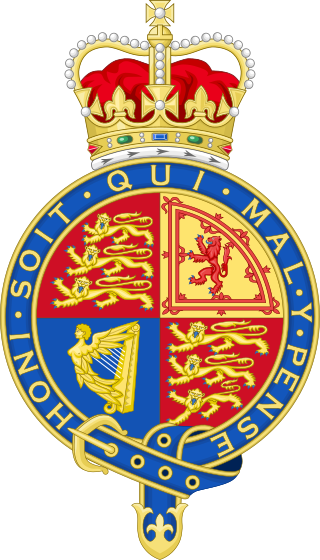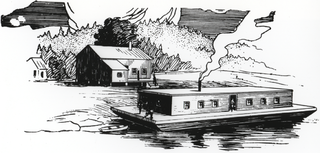Canadian federalism involves the current nature and historical development of the federal system in Canada.
Pith and substance is a legal doctrine in Canadian constitutional interpretation used to determine under which head of power a given piece of legislation falls. The doctrine is primarily used when a law is challenged on the basis that one level of government has encroached upon the exclusive jurisdiction of another level of government.
Section 92(13) of the Constitution Act, 1867, also known as the property and civil rights power, grants the provincial legislatures of Canada the authority to legislate on:
13. Property and Civil Rights in the Province.

Russell v R is a Canadian constitutional law decision dealing with the power of the federal Parliament. The case was decided by the Judicial Committee of the Privy Council, at that time the highest court in the British Empire, including Canada. The Judicial Committee held that the Canada Temperance Act was valid federal legislation under the peace, order and good government power, set out in section 91 of the Constitution Act, 1867. The case expanded upon the jurisprudence that was previously discussed in Citizen's Insurance Co. v. Parsons.

Ontario (AG) v Canada (AG), also known as the Local Prohibition Case, is a significant Canadian constitutional decision by the Judicial Committee of the Privy Council, at that time the highest court in the British Empire, including Canada. It was one of the first cases to enunciate core principles of the federal peace, order and good government power.

Re Board of Commerce Act 1919 and the Combines and Fair Prices Act 1919, commonly known as the Board of Commerce case, is a Canadian constitutional decision of the Judicial Committee of the Privy Council in which the "emergency doctrine" under the federal power of peace, order and good government was first created.

General Motors of Canada Ltd v City National Leasing is a leading Supreme Court of Canada decision on the scope of the Trade and Commerce power of the Constitution Act, 1867 as well as the interpretation of the Ancillary doctrine.

Proprietary Articles Trade Association v Canada (AG), is a Canadian constitutional decision of the Judicial Committee of the Privy Council on the Constitution's criminal law power under section 91(27).

Westendorp v R, [1983] 1 S.C.R. 43 was a decision of the Supreme Court of Canada on the scope of the federal Parliament's criminal law power under section 91(27) of the Constitution Act, 1867. A unanimous Court found that a municipal by-law that prohibited standing in the street for the purpose of prostitution was in the nature of a criminal law prohibition and therefore ultra vires of the provincial constitutional authority. The decision surprised many legal scholars who considered it to be inconsistent with previous Supreme Court cases where provincial laws of a moral nature were upheld under the provincial power. This was also the first case where the Canadian Charter of Rights and Freedoms was cited in argument to the Supreme Court, although the Charter argument was ultimately abandoned during the hearing.

Reference Re Firearms Act is a leading constitutional decision of the Supreme Court of Canada on the division of powers regarding firearms legislation and the Canadian Firearms Registry. A unanimous Court held that the federal Firearms Act was constitutionally valid under the federal criminal law power.

Caloil Inc v Canada (AG) is a leading constitutional decision of the Supreme Court of Canada on the Trade and Commerce power under section 91(2) of the Constitution Act, 1867. The Court upheld a federal law prohibiting the transport or sale of imported oil in a certain region of Ontario.

Siemens v Manitoba (AG), [2003] 1 S.C.R. 6, 2003 SCC 3 is a leading Supreme Court of Canada decision on whether provincial plebiscite, used to determine if video lottery terminals (VLTs) should be banned from individual communities, are constitutional. The Court held that the plebiscites were a valid exercises of the province's power to legislate on matters "of a local nature" under section 92(16) of the Constitution Act, 1867, and that the plebiscite did not violate the rights of the VLT owners under sections 2(b), 7 and 15(1) of the Canadian Charter of Rights and Freedoms.
Section 91(27) of the Constitution Act, 1867, also known as the criminal law power, grants the Parliament of Canada the authority to legislate on:
27. The Criminal Law, except the Constitution of Courts of Criminal Jurisdiction, but including the Procedure in Criminal Matters.
Section 91(2) of the Constitution Act, 1867, also known as the trade and commerce power, grants the Parliament of Canada the authority to legislate on:
2. The Regulation of Trade and Commerce.

Ward v Canada (AG) is a leading Supreme Court of Canada decision on federalism. The Court re-articulated the "pith and substance analysis and upheld the regulations prohibiting sale of "blueback" seals for the valid purpose of "curtailing commercial hunting of young seals to preserve the fisheries as an economic resource".

British Coal Corp v R is a decision of the Judicial Committee of the Privy Council in which the authority of the Canadian Parliament to prohibit appeals to the JCPC in criminal cases was upheld.
The passage of the Canadian Charter of Rights and Freedoms in 1982 allowed for the provision of challenging the constitutionality of laws governing prostitution law in Canada in addition to interpretative case law. Other legal proceedings have dealt with ultra vires issues. In 2013, three provisions of the current law were overturned by the Supreme Court of Canada, with a twelve-month stay of effect. In June 2014, the Government introduced amending legislation in response.

Reference Re Assisted Human Reproduction Act is an appeal from the Quebec Court of Appeal to the Supreme Court of Canada on a reference question posed as to the constitutional validity of the Assisted Human Reproduction Act that had been passed by the Parliament of Canada.

Canada (AG) v British Columbia (AG), also known as the Reference as to constitutional validity of certain sections of The Fisheries Act, 1914 and the Fish Canneries Reference, is a significant decision of the Judicial Committee of the Privy Council in determining the boundaries of federal and provincial jurisdiction in Canada. It is also significant, in that it represented a major victory in the fight against discrimination aimed at Japanese Canadians, which was especially prevalent in British Columbia in the early part of the 20th century.

Quebec (AG) v Canada (AG), 2015 SCC 14 is a Canadian constitutional law case concerning the federal government's ability to destroy information related to the Canadian long-gun registry pursuant to the federal criminal law power.





